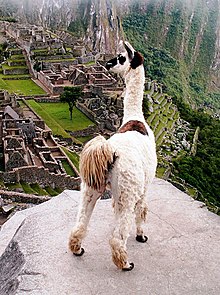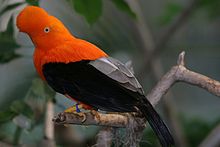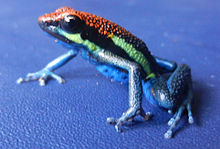
Manu National Park is a national park and biosphere reserve located in the regions of Madre de Dios and Cusco in Peru. It protects a diverse number of ecosystems including lowland rainforests, cloud forests and Andean grasslands.

Huascarán National Park is a Peruvian national park that comprises most of the mountain range known as Cordillera Blanca which is part of the central Andes, in the region of Ancash. The park covers an area of 340,000 hectares and is managed by the Peruvian Network of Protected Natural Areas, or SERNANP. It was designated as a World Heritage Site in 1985 by UNESCO, is also a well-known mountaineering spot, and harbors a unique biodiversity with plant species such as the Queen of the Andes, trees of the genera Polylepis and Buddleja, and animals such as spectacled bears, condors, vicunas, and tarucas.

Madidi is a national park in the upper Amazon river basin in Bolivia. It was established in 1995 with a total land area of 18,958 km2. Together with the nearby protected areas Manuripi-Heath and Apolobamba and the Manu Biosphere Reserve (Peru), Madidi is part of one of the largest protected areas in the world.
Jackson's climbing salamander is a species of salamander in the family Plethodontidae. It is endemic to Guatemala. Its natural habitat is subtropical or tropical moist montane forests. It is threatened by habitat loss. The salamander is among the 25 "most wanted lost" species that are the focus of Global Wildlife Conservation's "Search for Lost Species" initiative, as it had not been seen since 1975. It was rediscovered in 2017 at an amphibian reserve in the Sierra de los Cuchumatanes.
El Sira Communal Reserve is a protected area in Peru created to preserve the biodiversity of the Sira Mountains and the ancestral sustainable use of the area's resources by the nearby native peoples. It also protects the headwaters of the Pachitea river basin. The reserve covers an area of 616,413 hectares (6,164.13 km2) within the regions of Huánuco, Pasco and Ucayali. The reserve was created in 2001 and in 2010, UNESCO recognized it as part of the Oxapampa-Asháninka-Yánesha Biosphere Reserve.

The Cuyabeno Wildlife Reserve is the second largest reserve of the 56 national parks and protected areas in Ecuador. It is located in the Putumayo Canton in the Sucumbíos Province and in the Aguarico Canton in the Orellana Province. It was decreed on 26 July 1979 as part of the creation of the national protected areas system based on the recommendations of the FAO report on the "National Strategy on the Conservation of Outstanding Wild Areas of Ecuador".
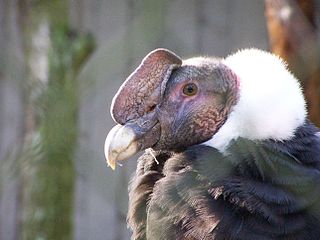
The wildlife of Chile is very diverse because of the country's slender and elongated shape, which spans a wide range of latitude, and altitude, ranging from the windswept coastline of the Pacific coast on the west to northern Andes to the sub-Antarctic, high Andes mountains in the east. There are many distinct ecosystems.

The Peruvian Yungas comprise a tropical and subtropical moist broadleaf forest ecoregion in Peru.

The Southwest Amazon moist forests (NT0166) is an ecoregion located in the Upper Amazon basin.
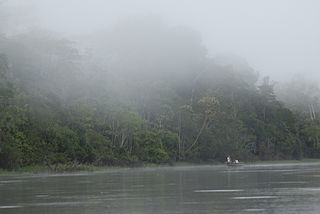
Tamshiyacu Tahuayo Regional Conservation Area is a protected area located south east of Iquitos, extending over the Peruvian department of Loreto, provinces of Maynas, Ramón Castilla and Requena. It was established by the Peruvian Ministry of Environment on May 15, 2009. The reserve is managed and funded by the Regional Government of Loreto.
Charles A Munn III is an American conservation biologist and ecotourism entrepreneur. Munn is the founder and owner of SouthWild, a conservation-based ecotourism company that offers photography safaris throughout South America. In 2013, Condé Nast Traveller listed him as one of worlds's three leading experts on wildlife tourism, and the only one for South America. From 1984-2000 he was a conservation field biologist with the Wildlife Conservation Society. He also founded Peru Verde Conservation Group, the BioBrasil Foundation, and Tropical Nature Conservation Group. Munn is an American citizen but spends most of his time in Brazil and Chile. He is based in the Mato Grosso state.
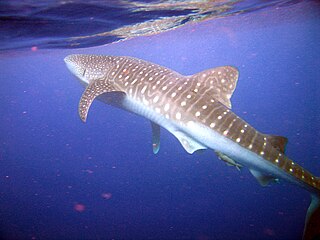
The flora and fauna of Honduras reflects the country's geographical location inside the tropics. This has allowed for diverse species of plants and animals to be adapted, but some of them are now in danger of extinction. This has posed the Honduran government, offices and nature organizations to look after the protection of the local environment, like the creation of nature reserves.

The Solimões-Japurá moist forests (NT0163) is an ecoregion in northwest Brazil and eastern Peru and Colombia in the Amazon biome. It has a hot climate with high rainfall throughout the year, and holds one of the most diverse collections of fauna and flora in the world. The ecoregion is relatively intact.

The Iquitos várzea (NT0128) is an ecoregion of flooded forest along rivers in Brazil, Peru and Bolivia in the west of the Amazon biome. The forest is seasonally flooded up to 7 metres (23 ft) by whitewater rivers carrying nutrient-rich sediment from the Andes. The meandering rivers often shift course, creating a complex landscape of oxbow lakes, marshes, levees and bars, with grasslands, shrubs and forests in different stages of succession. During the extended flood periods fish enter the forest in search of fruit. The várzea is accessible by the navigable rivers that run through it, and has suffered from extensive deforestation to extract timber and create pasture for livestock.
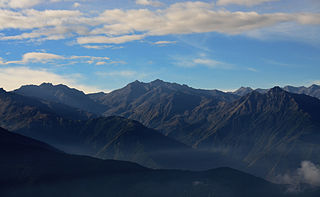
The Venezuelan Andes montane forests (NT0175) is an ecoregion in the northern arm of the Andes in Venezuela. It contains montane and cloud forests, reaching up to the high-level Cordillera de Merida páramo high moor ecoregion. The forests are home to many endemic species of flora and fauna. Their lower levels are threatened by migrant farmers, who clear patches of forest to grow crops, then move on.

The Cordillera Oriental montane forests (NT0118) is an ecoregion in Venezuela and Colombia along the east slopes of the eastern cordillera of the Andes. The extensive region of submontane and montane forests includes distinctive flora and fauna in the north, center and southern sections. The ecoregion is home to numerous endemic species of fauna. Despite extensive changes due to logging, farming and ranching, large areas of the original habitat remain intact, and the ecoregion has rich biodiversity.

The Napo moist forests (NT0142) is an ecoregion in the western Amazon rainforest of Colombia, Ecuador and Peru.

The Magdalena Valley montane forests (NT0136) is an ecoregion in the Andes mountains of central Colombia.

The Eastern Cordillera Real montane forests (NT0121) is an ecoregion in the eastern range of the Andes of southern Colombia, Ecuador and northern Peru. The ecoregion covers the eastern slopes of the Andes, and includes montane forest that rises from the Amazonian rain forest, with cloud forest and elfin forest at higher elevations. It is rich in species, including many endemics. It is threatened by logging and conversion for pasturage and subsistence agriculture.
